It all started with a ‘Hackweek.’ Hackweek is a creative week that all our team members get after they finish working on a project. During this week our developers spend time building projects that typically end up on GitHub. When we introduced Hackweeks about a year ago, we couldn’t even imagine what results this would bring. It turns out that giving away creative solutions for free can grow into a powerful marketing strategy. At least, this is how it worked out for our company. We published our first Hackweek project on GitHub in January 2015 – a library called Side Menu Animation for Android. As of today, it has earned 2,649 stars.
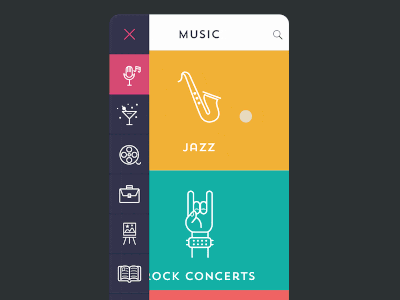
1. Make a Remarkable Project
There are at least three ways you can make your source code remarkable: 1) build a tool that solves a problem or improves an existing solution, 2) break a traditional concept and create your own, or 3) spot trends.1. Build a tool that solves a problem or improves an existing solution.
There are more than 30 million repositories on GitHub. But that doesn’t mean that all problems are solved. Far from it, actually. Even if there’s no obvious problem, there are a lot of existing solutions that could be built better. This is especially true when it comes to Android app development. The projects Koloda and uCrop are two of our most popular animations on GitHub. These libraries offer alternatives to existing solutions – albeit great improved alternatives. Koloda is our version of Tinder’s card-swipe functionality. A lot of developers have already implemented similar solutions, but we weren’t satisfied with any other them. We decided to make swipe-left-to-like-and-right-to-pass much simpler. Our take includes:- API designed in a native way
- A reverse previous card feature
- A fully customisable library
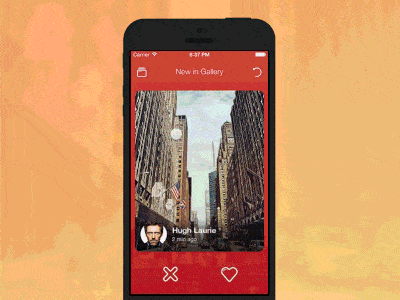
- Support for any crop ratio.
- Gesture-based scaling, translation, and rotation of images.
- A solution to prevent empty space inside crop bounds.
- A ready-to-use crop Activity, and the possibility to use the underlying Crop view on its own.
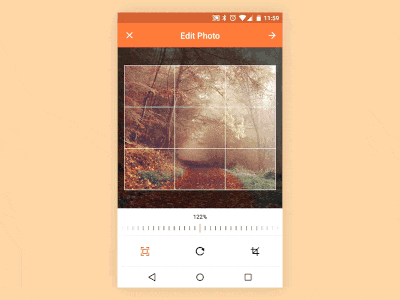
2. Break a traditional concept and create your own.
The majority of apps you have on your mobile phone have similar interface elements. Think of a sidebar menu. When you tap on the menu icon, the menu appears, pushing all content to the side. Sure, it’s practical and familiar. The menu does what it is supposed to do. But it’s just a bit too predictable. In other words… boring! That’s why we came up with the Guillotine Menu (check out the component for iOS and Android). This component offers a much more creative way of displaying a menu. It falls down from the top in an entertaining manner when you tap on an icon. Your idea doesn’t necessarily have to solve a problem. If you get creative and reinvent a concept, you can always draw people’s attention.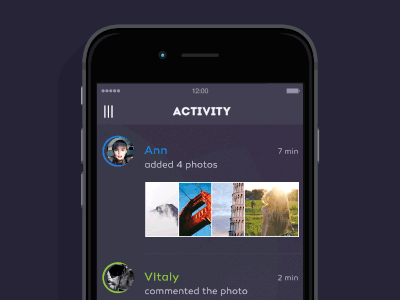
3. Spot trends.
New trends are always arising all over the world. Trends can refer to a new design style like Material Design, new technology like virtual reality, or they can be a new programming language like Swift. Take advantage of a trend people are talking about and you’ll quickly get discovered. You just need to keep your eyes open. You don’t literally have to keep your eyes glued to the screen to keep your finger on the pulse. Check out what your friends are talking about or go watch a movie. You can always use current events as the inspiration for your next GitHub project! We learned this when we made a Star Wars inspired animation close to the premiere of the movie “Star Wars: The Force Awakens.” Using the hype surrounding the premiere, we quickly gained a lot of popularity for both our Android and iOS animations. Just remember that timing is important if you’re banking on trends. We published the iOS version of the Star Wars animation on the day the second official trailer for Star Wars was released. At that point, the hype was escalating, and our project quickly gained a lot of stars. The Android version was published on the actual day the Star Wars premiered in several countries. But at that time everybody already grew tired from hearing about the world premiere here and there. The project simply wasn’t that interesting anymore. As a result, our Android version of Star Wars is less popular than the iOS version.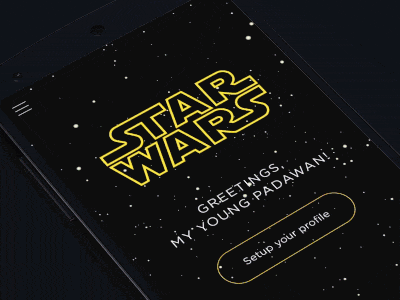
2. Come Up With a Remarkable Name.
The name of your project can have a big influence on its popularity. The funnier the name, the more likely it will gain interest. Our project EatFit, for example, was inspired by Google Fit. Since it is designed similarly to Google Fit, we came up with a name that brings an association.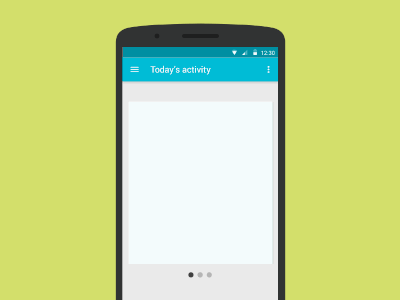
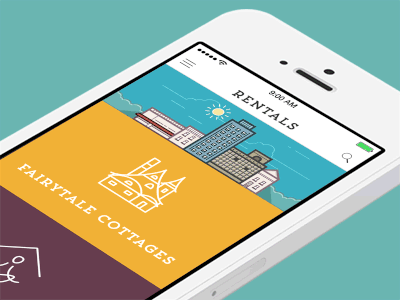
3. Construct Your Repo and README
This might seem obvious, but you should construct your repo briefly, clearly, and nicely. You can follow this structure:- Write a headline where you briefly describe your component.
- Add a short and clear description.
- Create compelling graphics.
- Describe how to use your library and include snippets of code.
- Tell how other developers can customize your library.
- Include your contact information.
4. Spread the Word
This is probably the most important step – right after making a killer project – if you want to get noticed. You can spread the word in different ways, but below are our key takeaways: 1. Social media: we spread the word every time we publish a new GitHub project through regular social media networks such as Facebook, Twitter and Linkedin. But we also share our works in places where we can get in touch with most tech interested people, such as Stackoverflow, Quora, Reddit, and Google Plus. 2. Programming blogs and newsletters: if you want to target a broader tech audience you can reach out to programming blogs. That can be Hacker News, CodeProject, Dzone, Product Hunt, and others. We also send out requests to news sites – such as Android Weekly – asking them to feature our new GitHub project in their newsletter. But make sure you know when these sites schedule news delivery. Another reason why our Android version of the Star Wars animation didn’t get as much attention as we expected was that we published the animation on Monday – the day of the premiere – but the newsletter arrived the next Sunday (!). Obviously, nobody would be much interested in the Star Wars animations a whole week after the actual premiere. 3. Your own blog: if you have your own blog where you regularly write about technology, it’s an ideal way to get the news out. You can thoroughly describe how you developed or designed your project, wrapping it up into a story. People love stories.5. Respond to Issues and Give Feedback
Answer comments and open issues as quickly as possible. The issues don’t necessarily have to be bugs. They can be simple questions, feedback, or a note about a new feature added to your library. In that case it’s a good idea to label the issues after what they concern. That will make it easier for you and others to navigate through the issues and detect actual bugs. Lastly, you should update your component every time an OS is updated. A component that doesn’t support the latest OS version is just asking for open issues.6. Keep Rocking
If you’re talented, then it should be no problem to get popular on GitHub. Our advice here is only a strategy to get discovered. There can be a lot of ways to gain popularity on GitHub. The success of our first project – the Side Menu – could have been attributed to the Material Design style that was new and trendy at the time. But it could also be attributed to our marketing department posting the repo everywhere.Frequently Asked Questions (FAQs) about GitHub as a Marketing Tool
How can GitHub be used as a marketing tool?
GitHub, primarily known as a platform for developers, can also be used as a powerful marketing tool. It allows you to showcase your projects, collaborate with others, and build a community around your product or service. By creating a repository for your project, you can share your work with others, receive feedback, and make improvements. This can help to build credibility and trust with your audience. Additionally, GitHub’s social features, such as followers and stars, can help to increase your visibility and reach on the platform.
What are the benefits of using GitHub for marketing?
There are several benefits of using GitHub for marketing. Firstly, it allows you to reach a wider audience. GitHub has millions of users worldwide, providing a large potential audience for your projects. Secondly, it allows for collaboration. You can work with others to improve your projects, and you can also contribute to other projects to increase your visibility. Lastly, GitHub provides a platform for showcasing your work. You can demonstrate your skills and expertise, and build a portfolio of your projects.
How can I promote my project on GitHub?
Promoting your project on GitHub involves several steps. Firstly, you should create a detailed README file for your project. This should include information about the project, how to use it, and how to contribute. Secondly, you should actively engage with your community. Respond to issues and pull requests, and encourage others to contribute. Lastly, you can use GitHub’s social features to increase your visibility. Encourage others to star your repository, and follow other users to build your network.
How can I use GitHub to build a community around my project?
Building a community on GitHub involves engaging with your users and contributors. You can do this by responding to issues and pull requests, and by encouraging others to contribute to your project. You can also create a CONTRIBUTING file to provide guidelines for contributions. Additionally, you can use GitHub’s social features to build your network. Follow other users, and encourage others to star your repository.
How can I use GitHub to showcase my work?
GitHub provides a platform for showcasing your work. You can create a repository for each of your projects, and include a detailed README file with information about the project. You can also include screenshots or demos to provide a visual representation of your work. Additionally, you can use GitHub Pages to create a website for your project.
How can I increase my visibility on GitHub?
Increasing your visibility on GitHub involves actively engaging with the community and using GitHub’s social features. You can respond to issues and pull requests, contribute to other projects, and follow other users. You can also encourage others to star your repository, which can help to increase its visibility.
How can I use GitHub to collaborate with others?
GitHub provides several features for collaboration. You can invite others to contribute to your project, and you can also contribute to other projects. You can use issues and pull requests to discuss changes and improvements, and you can use GitHub’s social features to build your network.
How can I use GitHub to build credibility and trust with my audience?
Building credibility and trust on GitHub involves showcasing your work and engaging with your community. You can create a repository for each of your projects, and include a detailed README file with information about the project. You can also respond to issues and pull requests, and encourage others to contribute. This can help to demonstrate your expertise and commitment to your project.
How can I use GitHub’s social features for marketing?
GitHub’s social features can be used for marketing by increasing your visibility and reach on the platform. You can encourage others to star your repository, which can help to increase its visibility. You can also follow other users to build your network. Additionally, you can use issues and pull requests to engage with your community and promote your project.
How can I use GitHub Pages for marketing?
GitHub Pages provides a platform for creating a website for your project. You can use this to showcase your work, provide information about your project, and engage with your community. You can also use it to provide a visual representation of your project, and to demonstrate your skills and expertise.
 Emilia Hansen
Emilia HansenEmilia is a writer currently working for Yalantis, a mobile app development company. She covers mobile technology, product development, and entrepreneurship. She is a Dane, living in Ukraine at the moment.




